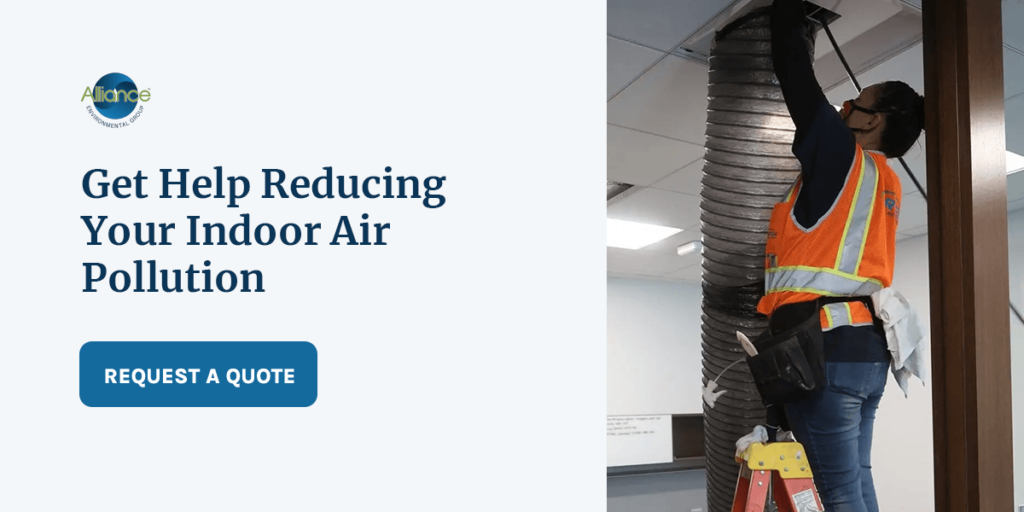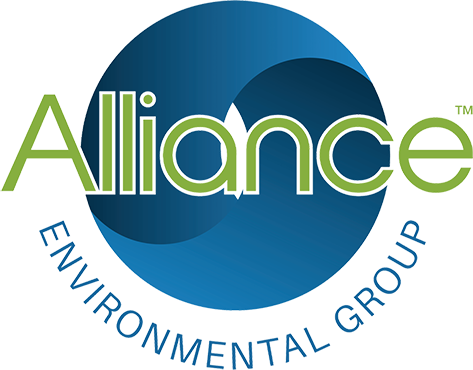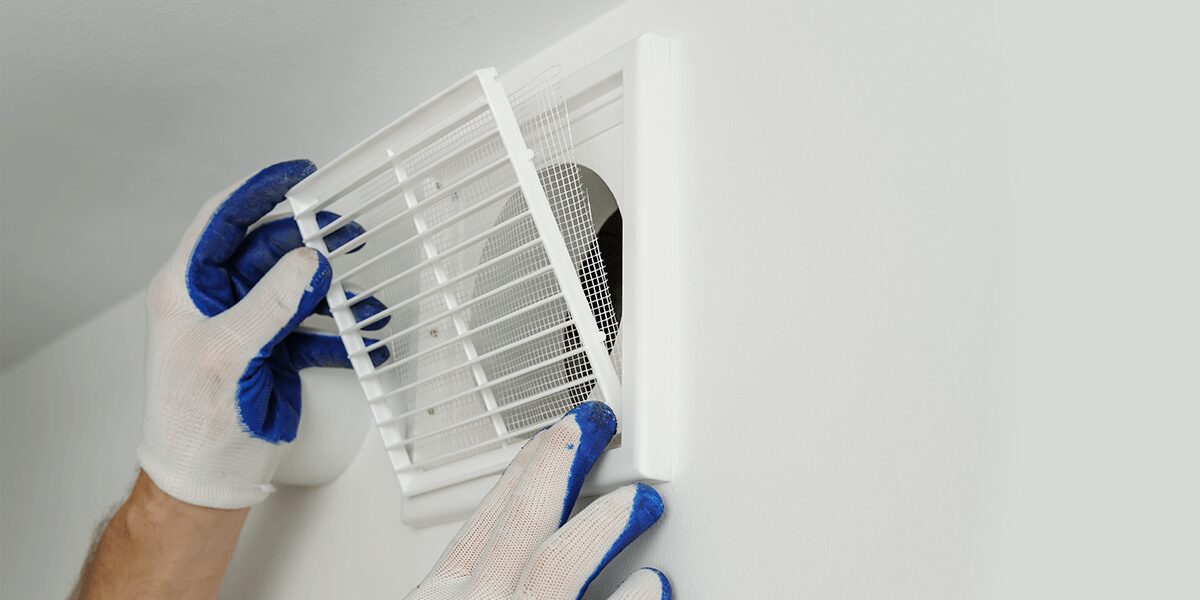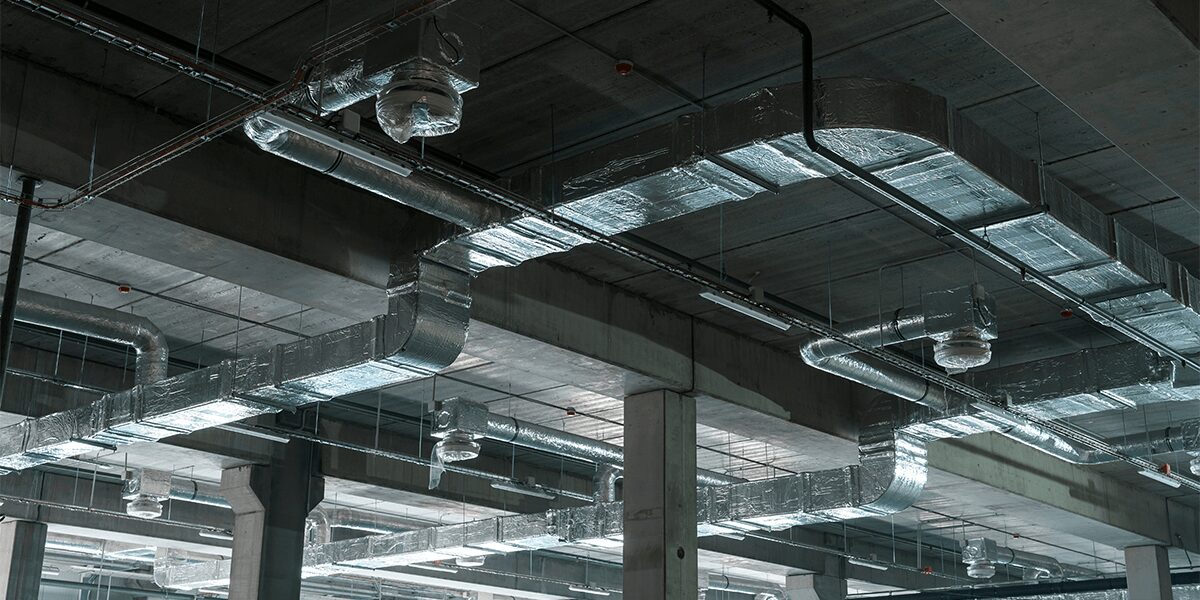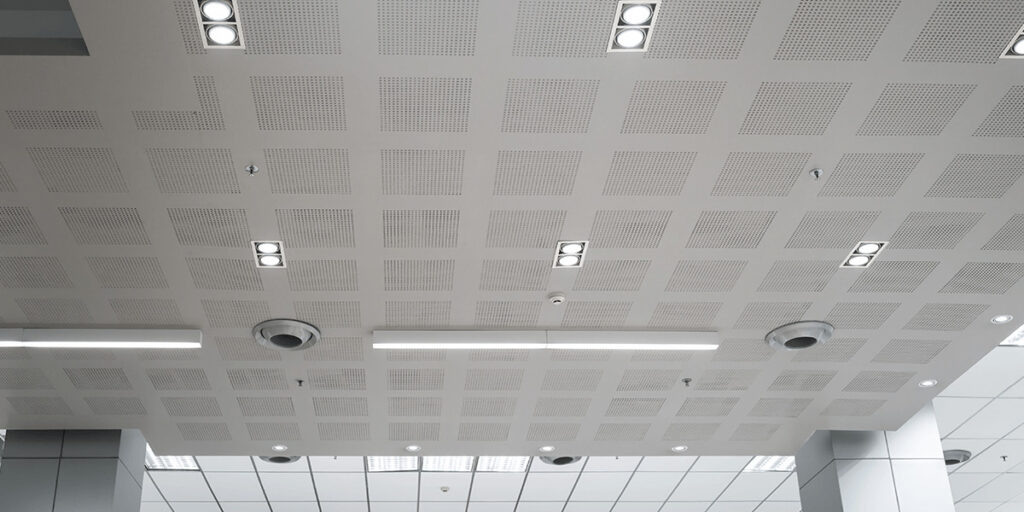
Indoor air quality directly impacts health and well-being. Poor air quality can make it challenging to be productive and cause physical discomfort. Prolonged exposure can result in severe health conditions. Monitoring indoor air quality and taking proper steps to improve it can benefit you and anyone else inside. Learn how to improve indoor air quality in office spaces, hospitals and clinical settings below.
How to Improve Indoor Air Quality Naturally
Poor air quality can severely impact people who experience prolonged exposure to pollutants and contaminants, and improving air quality can benefit everyone entering the building. There are several ways you can create a more comfortable space. Families, guests, tenants, staff and customers can enjoy clean air and a safe environment when in the room or building.
1. Improve Ventilation
Ventilation is one of the most important aspects of improving air quality because it can control indoor temperatures, reduce mold growth and dilute or remove indoor pollutants. Ventilation systems can reduce the spread of airborne diseases and remove stale air containing harmful particles.
Mechanical ventilation, such as an HVAC system, fan and similar appliances, provides excellent ventilation control to keep your space as comfortable as possible. Proper maintenance for these systems is essential to ensure your system works effectively and keeps everyone safe and comfortable.
2. Use Safe Cleaners
Cleaning is an integral part of improving indoor air quality. Vacuuming, dusting and wiping surfaces can remove dust, allergens and other contaminants that can quickly infiltrate the air and impact everyone in the space. However, finding the right cleaning products can also make a significant impact.
Although some facilities, such as hospitals and clinical offices, will need specific cleaners to meet industry requirements, selecting the least harmful options is important. Harsh chemicals can produce fumes that irritate the throat, eyes, nose, lungs and skin. These fumes can make breathing challenging for people with existing respiratory problems. The Centers for Disease Control (CDC) has outlined the ideal properties of cleaners in these settings, including:
- Nontoxic: Cleaning products should not harm the skin.
- Easy to use: Each cleaner should have easy, understandable directions.
- Acceptable odor: Products should not offend patients or users.
- Solubility: Each product should be soluble in cold and warm water.
- Environmentally friendly: Cleaning products should not harm the environment upon disposal.
- Persistence: Cleaners should have residual antimicrobial effects on surfaces.
3. Keep Smoke Outside
Preventing indoor air pollution can be simple. Smoke is a common pollutant that can quickly irritate the eyes, nose and throat. Sometimes smoke occurs in the kitchen as food burns or bubbles over in the oven or on the stove. Although this smoke may not seem harmful, it can cause acute respiratory problems and linger in the air without proper ventilation. If you have a cafe or other food locations for guests to enjoy, be sure to reduce these pollutants and quickly act if a situation occurs.
It’s important to prohibit smoking indoors. Although some facilities offer indoor locations for smoking, keeping these pollutants outside is the best course of action. Secondhand smoke can cause a handful of problems for anyone nearby. Cigarettes have many harsh chemicals, and secondhand smoke increases the risk of lung cancer and coronary diseases. Smoke can linger on clothes and furniture, making it hard to breathe, even if no one is actively smoking. To avoid this issue, consider creating an outdoor smoke area or prohibiting smoking anywhere on the property.
4. Dust and Vacuum Often
Your cleaning routine should include practices that effectively remove mold, pet dander, dust and similar contaminants. Vacuuming and dusting are two of the best ways to remove these pollutants. Create a routine of completing these tasks once or twice a week to ensure a clean environment.
As you clean your office spaces, patient rooms and other gathering areas, be sure to minimize clutter, which can quickly collect dust. Clean hard-to-reach places or areas you often forget about like vents, duct work, cabinets and the bottom of decorations and objects.
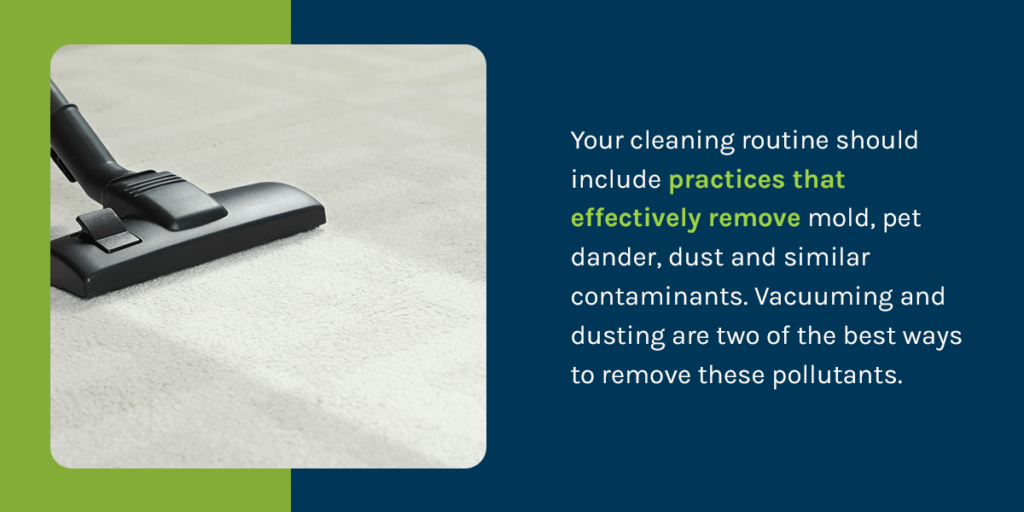
5. Address any Leaks or Pooling Water
Water leaks pose several threats. Along with unpleasant water damage, leaks can quickly make an unsafe environment. They allow excess moisture to pool in areas that should be dry. This can lead to organic compounds, like mold, growing in the space and damaging the building and systems. For instance, leaks can affect HVAC systems, air filters and similar systems. Water leaks lower system efficiency and allow harmful particles to easily fill the air, creating higher health risks from pollutants without having an efficient system to remove them.
6. Let In Some Fresh Air
Opening the windows can be an excellent way to remove stale air from a building. Natural ventilation can reduce indoor pollutants. Opening doors and windows lets fresh air enter and contaminants and pollutants exit. Letting air circulate throughout the space can create a more relaxing and comfortable environment while reducing the risks of remaining pollutants. You can also utilize fans to push contaminants from specific areas, such as kitchens or lobbies.
This small step can also help regulate indoor temperatures. Buildings without air conditioning systems can quickly become too hot during the warm months, causing people to become uncomfortable and occasionally resulting in water collecting in places it should not. Neglecting to care for water spots can lead to mold and other organic compounds that may affect those in the building. Opening the windows or doors on hot days can bring pleasant breezes and reduce the likelihood of bacteria.
7. Invest in Air Cleaners and Dehumidifiers
Air purifiers and dehumidifiers can work wonders to reduce airborne pollutant risks. Air cleaners combine fans and filters to pull pollutants from the air. The purifier continues this process, pushing out the clean air so you can enjoy fresh air without contaminants. Using these devices in common spaces that see frequent activity helps prevent bacteria from spreading easily.
Dehumidifiers help remove moisture from damp spaces. Areas like kitchens, basements and bathrooms can quickly collect excess water, which can cause organic material, including mold, to build. Without proper care, these materials can affect anyone in the area and settle in hard-to-reach places.
Discover Effective Ways to Reduce Indoor Air Pollution
At Alliance Environmental, you can find comprehensive and practical solutions for combatting concerns with air quality. We’re a leader in our industry, and we offer more than 100 years of combined experience. Our innovative solutions help businesses and homeowners tackle a range of concerns, including:
- Mold remediation
- Demolition
- Dust removal
- Asbestos and lead abatement
- Insulation removal and replacement
- HVAC duct and system services
- Heat treatment
Our services meet or exceed Environmental Protection Agency (EPA) and The Occupational Safety and Health Administration (OSHA) guidelines, and we rely on cutting-edge tools and technology to deliver the best solutions and quality service. Request a quote from our team to discover how we can improve your indoor air quality.
